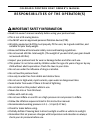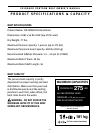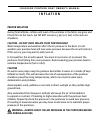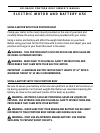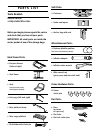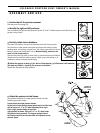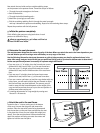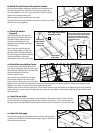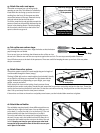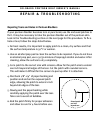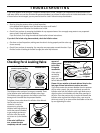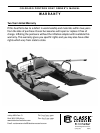
1
T R O U B L E S H O O T I N G
1. Start by giving the pontoon skins a visual inspection.
Is the pontoon skin ripped or torn? Are there any major scuff marks?
If so, it might be an indication of a bladder tear or leak.
2. Check if you can hear air escaping the bladder in any suspected areas. You can apply soapy water to any suspected
areas as well. A leak will produce bubbles.
If you find a hole, fix it using the methods listed earlier in these instructions.
If you don't find a leak using these methods, check the inflation valves:
3. Give them a visual inspection, making sure the valve is closing properly and the valve cap
closes securely.
4. Check if you can hear air escaping. You may also use soapy water around the valve. If you
find that a valve is leaking air around its edge, the valve may be loose.
If your boat appears to be losing air, it might not be because of a leak. Changes in air temperature, elevation and use on
cold water (which can cool the air inside the pontoon bladders) can all have an effect on the air inside the bladders. If none
of these factors have changed, you may need to look for a leak. Follow the steps listed below.
Checking For A Leaking Valve
The inflation valve consists of a two-part assembly. There
is the inflation valve itself and the inflation valve cage.
The inflation valve cage protects the inflation valve from
damage and is bonded into the pontoon bladder.
To tighten a loose valve insert the Inflation Valve Wrench
into the valve and twist
clockwise. It may be
necessary to grasp the
inflation valve cage (which is
inside the pontoon bladder)
to get enough purchase to
twist the valve. Be careful
not to tear or rip the bladder
skin.
If the valve is difficult to
turn, remove the valve
completely and add a small
amount of
silicon grease
to the valve
O-ring and
reassemble.
If the valve is
not leaking
around its
edge, you may
have a defective valve.
Please visit our website at the web address listed on the
last page of these instructions to order a new valve.
If you must remove the pontoon bladder from the pontoon
skin to make a repair, you must completely unscrew the
inflation valve from the inflation valve cage. Make sure to
align the valves in the bladder with the valve openings in
the skin. Since the pontoon skin is captive in between the
inflation valve cage and the inflation valve, care must be
taken not to tear, rip or stress either the bladder or the skin
by over-tightening the valve.
Inflation Valve Cage
(bonded to pontoon bladder)
Inflation Valve
Turn counter-clockwise
to loosen
Turn clockwise
to tighten
Valve O-ring
Check valve edge
for leaks



